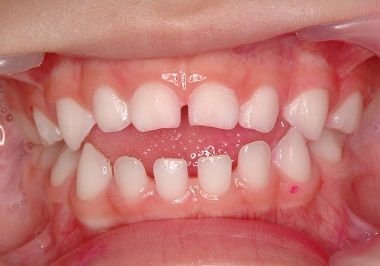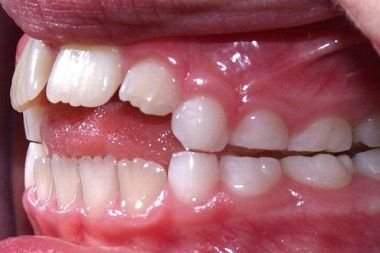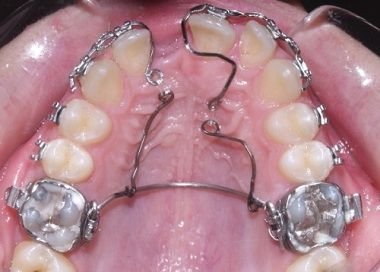
Habits are formed reactions that are resistant to change. An oral habit is a repetitive action which involves the oral cavity. Prolonged oral habits can affect the oro-facial structures and can influence facial growth, oral function, occlusal relationships and facial aesthetics of an individual. Therefore it is of interest to dentists and especially orthodontists that every oral habit noticed in a child must be corrected early before adulthood.
Sucking is a normal baby reflex beginning around the 29th week of gestation. Non-nutritive sucking (NNS) refers to sucking not relating to, or providing nutrition and this Involves sucking digit, pacifier or other inanimate objects such as a blanket or toy.
How common is this condition?
The prevalence of oral habits has been shown to vary worldwide with up to 90% of children engaging in one form of oral habit at infancy. In more recent times pacifier sucking has been shown to be one of the most common forms of non-nutritive sucking showing a prevalence of 0-86% worldwide compared to a prevalence of 2-55% with the digit sucking habit. Lower prevalence of oral habits has been reported among Negroid races and children from poor socio-economic backgrounds.
In my country Nigeria however, oral habits have been shown to occur in 13.8-34.1% of children with digit sucking being the most prevalent of the habits seen in up to half of them. This is commonly followed by tongue and lip habits. Pacifier sucking is far less common in this environment but appears to be increasing in recent times. Prevalence of oral habits reduces with increase in age. Study by Isiekwe et al on 12 years old showed a prevalence of 2.1%.
What is Occlusion equilibrium?
The concept of occlusion equilibrium is very important in the stability of oral soft and hard tissues.
Neutral zone is the position of balance between the tongue on one side and the lips and cheek on the other hand. The form and function of the lips and tongue play a large part in the positions the teeth occupy,so for malocclusion to occur, there must be a shift in the occlusion equilibrium
Does oral habit always result in malocclusion?
The extent of damage caused by any abnormal force to the dentition is dependent on:
- Duration- total time the child spends sucking
- Frequency- Number of times the child practices the habit during the day
- Intensity – Amount of force applied to the teeth and operating structures.
So the fact that a child engages in oral habit will not automatically result in malocclusion.
The various oral habits that can predispose children to malocclusion are;
- Digit sucking
- Pacifier sucking
- Tongue habits
- Lip habits
- Mouth breathing
- Bruxism
Digit sucking

Theories of digit sucking
- Sigmund Freud’s theory of Psychoanalytical/Psychosexual theory which regarded the mouth as an erotic zone that infants derives pleasure from while sucking.
- Digit sucking evolves from an inherent psychosexual drive where the child derives pleasure during digit sucking
- Learning Theory- The infant associates sucking with a pleasurable feeling ( Davidson, Haryett)
Effects of Digit sucking on occlusion
Characteristics of malocclusion that develops during thumb or finger sucking are dependent on:
- Position of the digit in the mouth
- Associated oro-facial muscle contractions
- Position of the mandible
- Facial and skeletal morphology during sucking.
effects on the dentition include;
- Maxillary incisor flaring (proclination with spacing)
- Anterior open bite
- Posterior crossbite
- Lower incisor retroclination
- Restricted eruption of the maxillary incisors
- Supra-eruption of posterior teeth
- Class II molar relationship
Effects on the facial bones
- Narrow (V-shaped) anterior maxillary arch
- Counterclockwise rotation of the maxilla
- Clockwise rotation of the mandible
- Increased mandibular plane steepness (LFH)
- Increased Skeletal 2 pattern
- Increased Anterior facial height
Effects on soft tissues
- Hypotonic upper lip
- Hyperactive lower lip
- Associated tongue habit
Tongue

The ideal resting position of tongue is completely within the arches. However it occasionally takes up an adaptive postural position slightly protruded between the teeth to touch the lower lip (anterior resting position). This is usually associated with lip incompetence. The position of the dentition within the arch may depend on the size, resting position and function of the tongue
Pacifier sucking

Mouth breathing
Respiratory needs are a primary determinant of the posture of the jaws and tongue.Chronic nasal obstruction may be caused by enlarged adenoids, prolonged inflammation of the nasal mucosal due to allergies or chronic infection and enlarged tonsils.This results in the need to breathe through the mouth.Occurrence of this obstruction at the time of facial growth may cause a type of malocclusion known as ‘adenoid facies’ or ‘long face syndrome’.
Due to postural changes that accompany mouth breathing it is often associated with Increase in facial height, Supra-eruption of the posterior teeth,anterior open bite,increased overjet and narrowing of the maxillary arch.
Bruxism
This is defined as a repetitive grinding of teeth resulting from a non-functional rhythmic contraction of the masseter, temporalis and internal pterygoid muscles.Usually it occurs subconsciously when the child is sleeping. It is more frequently occurring in hyperactive children. The prevalence is high about 5.1-96% in children.However, it is less frequent seen in adolescents about 7-15.1% and it is reported to be more frequent in boys.
Treatment planning
Successful control of this deleterious oral habit depends on the child and parents’ co-operation and the child’s wish to stop the habit.Before treatment planning some important questions should be considered to assess the severity and nature of the problem.
- How long has the child had the habit?
- Is the habit causing or worsening the malocclusion?
- When does he/she perform the habit? Day/Night/Continually?
- Does the child do it at school?
- Can cessation of the habit lead to self- correction or prevent worsening of existing malocclusion?
- Is the child emotionally mature enough to accept treatment?
When should you be worried and seek intervention
Intervention is recommended after 4-5 years of age when the child is still in primary dentition stage. If the child is a high intensity, long duration sucking habit, intervention may be commenced before this age. Also advocated to intervene before 4years if patient has another associated behavioral problem e.g, hair pulling.
Treatment options
This depends on:
- Age of patient
- Type of habit
- Aetiologic background
- Attitude of child to habit
Different approaches have been advocated:
- Psychoanalytic method
- Counselling
- Behavioural modification
- Use of orthordontic appliances
Psychoanalysis
Clinician attempts to understand the psychological causes of an oral habit. It usually requires the consultation with a specialist and it is only required in patients with possible psychological issues relating to the habit.
Behavioural Modification
This involves methods aimed at reinforcing the child’s positive behavior. This includes:
- Positive reinforcement – Reward for good behaviour
- Negative reinforcement –Withdrawal of treats/ punishment
Reminder therapy
This apply to children that want to stop the habit and need some kind of reminder until complete cessation of the habit. Reminder therapy Involves application of bitter tasting or distasteful substances to the digit e g. Bitter leaf, quinine, stop n grow applied to the skin and nails of the digit. It can also involve the application of plaster to the offending digit or bandage wrapped around the elbow at night and use of thumbmit with wrist straps
Orthodontic appliance

Treatment mechanics can commence concurrently or after the habit has been broken. Orthodontic treatment mechanics is often required for patients who present with malocclusions which are not amenable to spontaneous correction and this can be instituted when other therapies fail.
In conclusion
There are a wide variety of oral habits. Many of these may have a deleterious effects on the occlusion of a growing child and this may continue to adulthood if there is no intervention. Early recognition and management of these habits by the dentist or specialist is recommended.
Thanks for reading.
Please note: All pictures used in this post are labelled for free usage.
Great work @drkomoo. This is a major challenge every parents faced when their children are growing up.My son sucks like anything.Right from the first few weeks of his birth till now we struggle to stop him,but he would not.I just believe he will stop soonest
Thank you for your comment and upvote.Like I said in the post, oral habit is a global phenomenon that is observed in about 90% of children. You can image that figure! so that your child is engaging in it is not a surprise to me. However what is most important is the age of the child. If your child is more than 4 years and still engages in active sucking and considering those 3 factors(frequency, duration and intensity), then you may need to seek urgent attention with a Dentist before the deleterious effects of sucking begin to manifest.